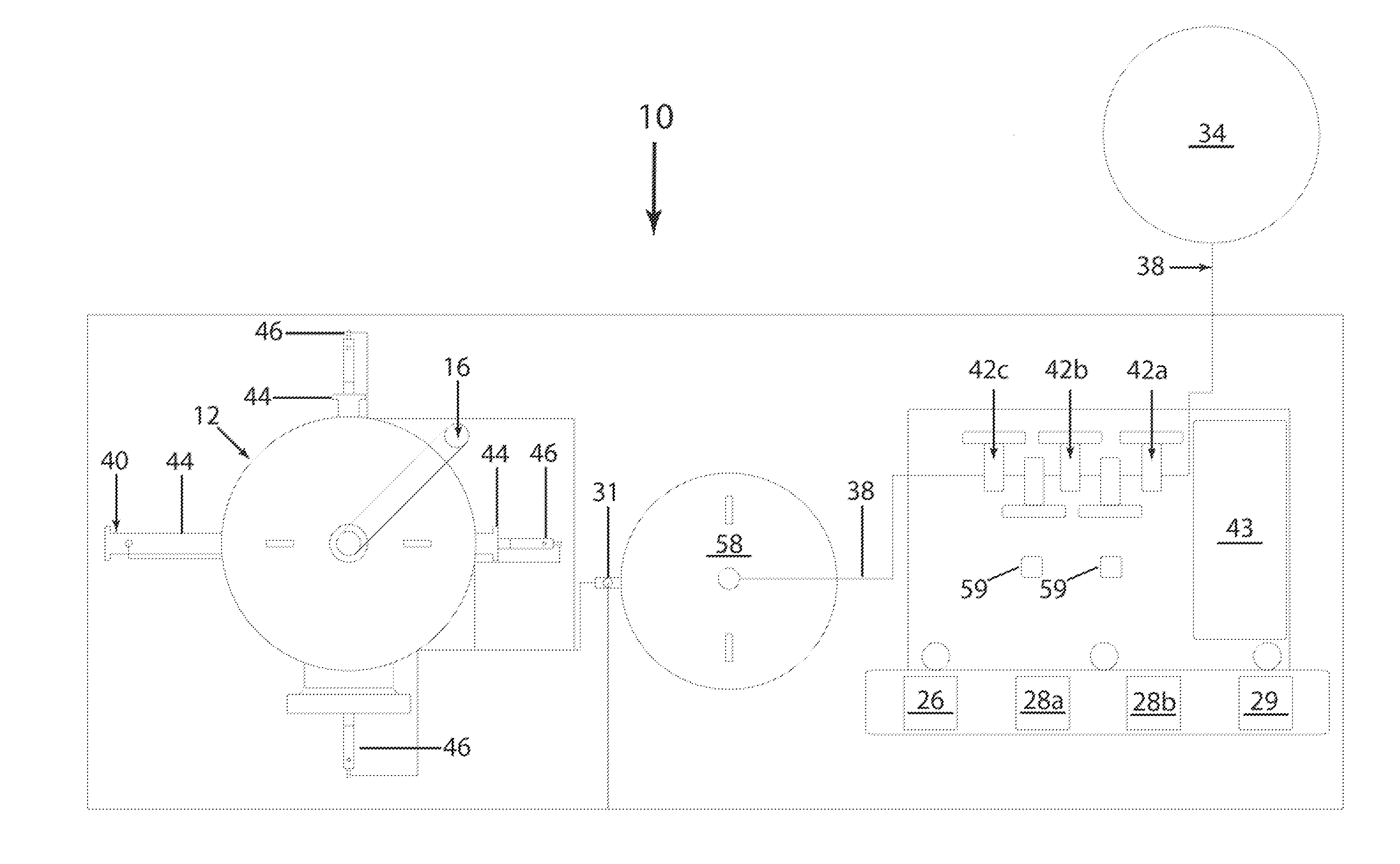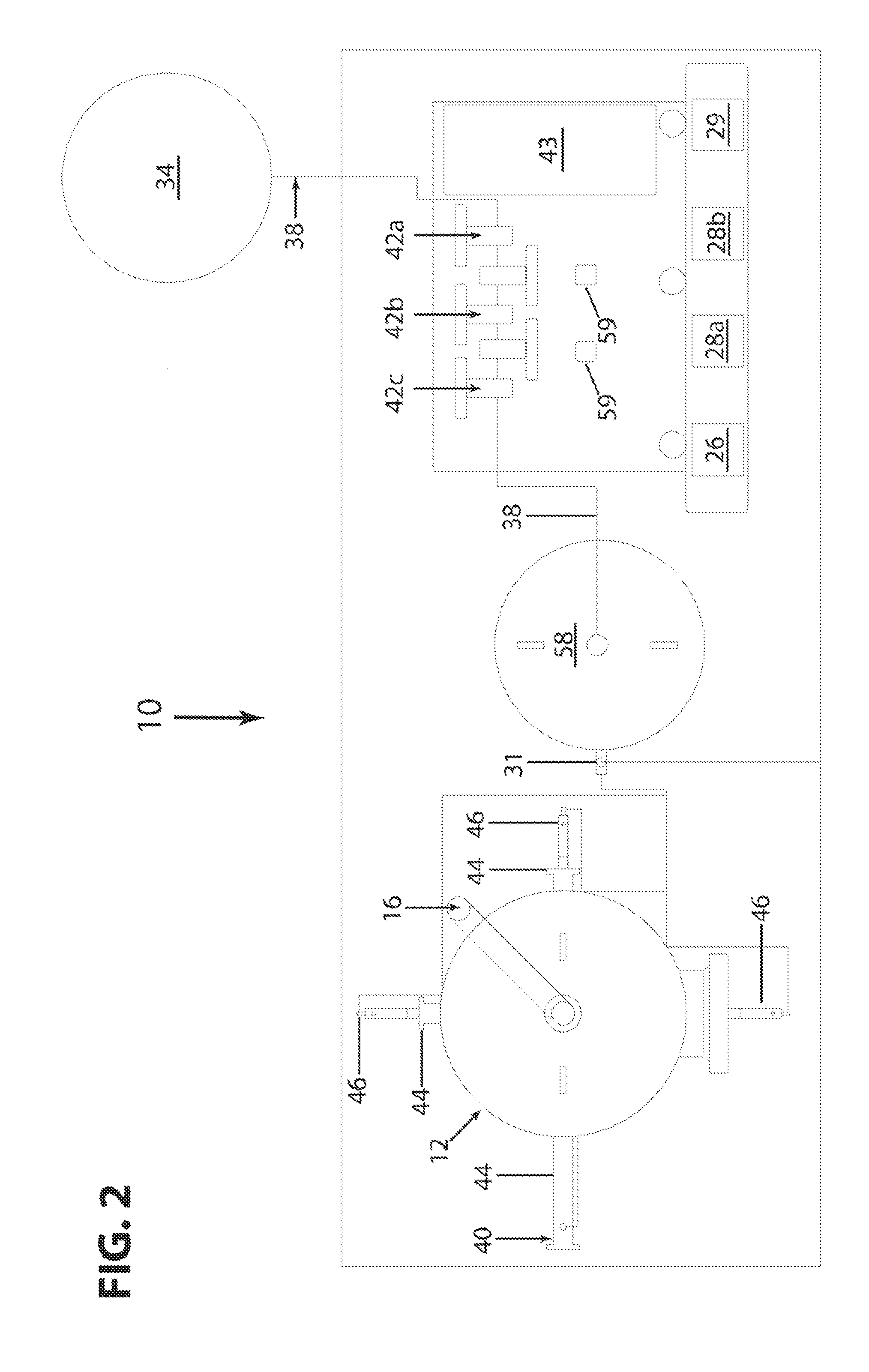Process stream decontamination systems and methods
a technology of decontamination system and stream, applied in the direction of disinfection, machines/engines, process and machine control, etc., can solve the problems of pipeline corrosion, narrowing of the line, pipeline narrowing, etc., and achieve the effect of accurate and continuous monitoring and identification
- Summary
- Abstract
- Description
- Claims
- Application Information
AI Technical Summary
Benefits of technology
Problems solved by technology
Method used
Image
Examples
Embodiment Construction
[0024]FIGS. 1 and 2 illustrate an exemplary decontamination system 10 that is constructed in accordance with the present invention. The decontamination system 10 is operably associated with a process stream that contains at least one contaminant of interest to be neutralized. In particular embodiments, the process stream can be natural gas flowing through a pipeline. The process stream could also be a flow of other liquids, such as crude oil or water. Typical contaminants include hydrogen sulfide (H2S), mercaptans, carbon dioxide (CO2), oxygen (O2), water (H2O) and biological populations. In addition, a detected “contaminant,” as discussed herein, can include conditions that can lead to contaminants, such as conditions that are ideal for hydrate formation or corrosion.
[0025]In certain embodiments, the decontamination system 10 of the present invention can be configured as a portable, modular system that is designed to be readily moved and integrated into an existing facility having ...
PUM
| Property | Measurement | Unit |
|---|---|---|
| diameter | aaaaa | aaaaa |
| pressure | aaaaa | aaaaa |
| pressure | aaaaa | aaaaa |
Abstract
Description
Claims
Application Information
 Login to View More
Login to View More - R&D
- Intellectual Property
- Life Sciences
- Materials
- Tech Scout
- Unparalleled Data Quality
- Higher Quality Content
- 60% Fewer Hallucinations
Browse by: Latest US Patents, China's latest patents, Technical Efficacy Thesaurus, Application Domain, Technology Topic, Popular Technical Reports.
© 2025 PatSnap. All rights reserved.Legal|Privacy policy|Modern Slavery Act Transparency Statement|Sitemap|About US| Contact US: help@patsnap.com



